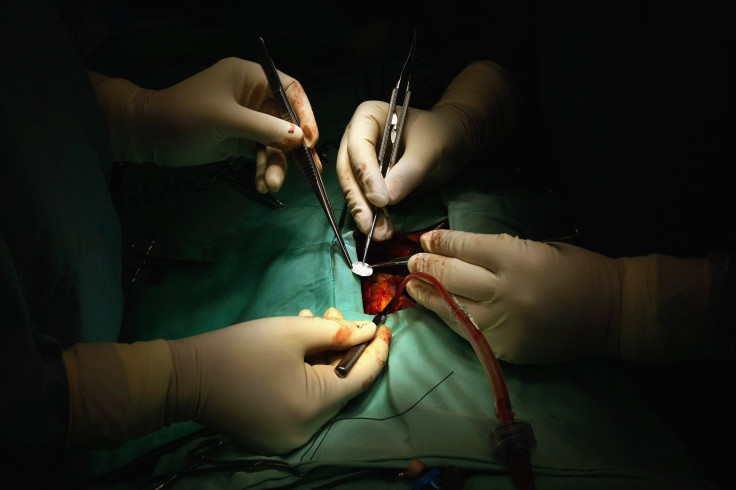Artificial Human Heart Muscle Created To Help Coronary Attack Victims

Researchers at the Duke University, Durham, North Carolina, claim they have made an artificial human heart muscle that’s big enough to be used to solve damage seen in heart attack victims. The team said that this development takes us closer towards the aim of repairing dead heart muscles in patients.
The study called “Cardiopatch Platform Enables Maturation and Scale-Up of Human Pluripotent Stem Cell-Derived Engineered Heart Tissues” published on Nov. 28, 2017, appeared on Nature Communications.
"Right now, virtually all existing therapies are aimed at reducing the symptoms from the damage that's already been done to the heart, but no approaches have been able to replace the muscle that's lost, because once it's dead, it does not grow back on its own," said Ilya Shadrin — the first author of the study who is also a biomedical engineering doctoral student at Duke University. "This is a way that we could replace lost muscle with tissue made outside the body."
The heart lacks the capability to regenerate its muscles after a heart attack. Usually, the dead muscle gets replaced by scar tissue that could neither contract nor convey electric signals(Both these actions are crucial for heartbeats to be smooth and forceful).
Presently, stem cells derived from blood, bone marrow or the heart are injected into the affected region to try and replenish at least part of the damaged muscle, as part of clinical trials.
Such treatments do show some positive effects. However, the mechanisms by which these treatments become effective are not completely understood.
Also, in such cases, lesser than 1 percent of the injected cells survive, and even lesser number of them end up becoming muscle cells.
But heart patches could possibly be implanted over the dead muscle- thereby staying active for longer. They also provide more strength for heart contractions and also help provide a smooth path for electrical signals to pass through the heart.
Also, the patches secrete growth factors and enzymes that could help with the recovery of damaged tissues that haven’t died yet.
But for such an approach to work, the heart patch must be big enough to cover the entire damaged tissue. Also, it should be as electrically active and strong as the native heart tissue. Otherwise, the discrepancy may result in deadly arrhythmias(abnormal heartbeat rhythm).
The heart patch created by the Duke University researchers is the first of its kind to meet the above-mentioned criteria.
The cells in the heart patch were grown from pluripotent human stem cells (Pluripotency here refers to the capability by which one cell could produce different cell types).
The patches were made using different types of human stem cells including the ones derived from embryos and also cells that were induced into a pluripotent state.
Different kinds of heart cells could be grown using these stem cells- fibroblasts, cardiomyocytes, endothelial, and smooth muscle cells. To do this, the cells are placed at particular ratios in a jelly-like substance where they would self-organize and evolve into functioning tissues.
The Duke University researchers were able to scale up the patches from 1 cm 2 and 4 cm 2 (size of the previous patches they created) to 16 cm 2.
Tests have also revealed that the heart muscle in the patch is completely functional. The mechanical, structural and electrical properties of the patch are similar to those in a healthy adult heart.
© Copyright IBTimes 2024. All rights reserved.





















